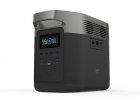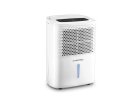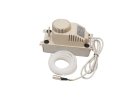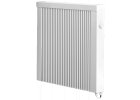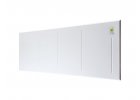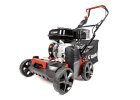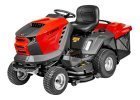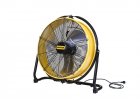How to choose a power generator?
Decisive for the choice of the right generator are the operating power and the type of voltage regulation. These two parameters determine which devices the power generator can supply with power. It is also important whether the power generator is single-phase or three-phase.
No matter what type of generator you are looking for, the following article can help you to choose.
Classification by phases:
A single-phase power generator - is sufficient for normal operation. This includes most small appliances such as lamps, small tools, measuring devices, televisions or computers. These types have a plug with two live pins and a contact opening for the protective conductor of the socket (230 V / 50 Hz).
A three-phase power generator - devices with a higher power for craftsmen or construction companies that have a three-phase connection (400 V/50 Hz). These are usually machines with a higher power, which are used in construction and industry. These generators have a 5-pole socket (3 phases, ground PE and neutral N). Some older units have only a 4-pole plug. Compared to single-phase generators, these models are more expensive. If a three-phase generator is used to supply single-phase equipment, care must be taken to ensure sufficient capacity.
Operating power
Before choosing the power generator, you need to be clear about which devices will be supplied with power.
Power generator by type of device:
- Resistive - This includes conventional light bulbs, hot plates or heat guns and other resistive devices. Therefore, the fact that their power over the entire period of operation corresponds to the actual consumption, they are the most suitable for power generators. To be able to supply an appliance with a specified power of 2 kW, a generator with an operating power of 2 kVA should be selected, with a power reserve of 10% recommended. For three-phase generators, the power factor is taken into account when converting the power from kVA to kW. 1 kVA = approx. 0.8 kW.
- Inductive - This includes tools driven by electric motors, circular saws, hammer drills, etc. Compared to their rated power, a much higher current is consumed (about 2 to 3 times). Therefore, losses occur. To avoid these losses, a power generator with a higher power rating should be used, which is about s.
- Hard start appliances - These include appliances that require a higher power output from the generator, such as pumps, compressors, and refrigerators. These devices require much more power at startup than the specified rating is (4 - 5 times higher or more).
- Capacitive - These devices place the highest demands on the power generator's output. They include fluorescent lamps, photo flashes, fluorescent cold cathode lamps, etc. These devices require a power generator with a capacity 1.5 times higher than the specified power consumption of the devices to be supplied.
Classification of generators by construction type:
Inverter generators -In this type of generators, the engine is located in a case-like housing. They can be used for powering fine electronics (e.g. computers, medical equipment, power tools). They are suitable for caravans, stalls, cottages, etc. Their power is lower than that of frame power generators. Their advantage is light weight and quiet operation. However, the purchase price is higher.
Frame generators - the name reflects their design. The engine is located in a rectangular frame. Because of their high efficiency, they are used to power most motor-driven machines, heat and light sources. Their advantage is a lower purchase price. The disadvantage can be a higher noise level and the inability to supply power to sensitive devices (such as computers).
These include: Gasoline frame generators - suitable as an emergency power source for family homes, cottages or weekend houses. They can also be used on construction sites, scaffolding and anywhere off-road. They are well suited for powering various garden tools and equipment, heating and lighting systems, as well as electric motors. They have a very good price-performance ratio. The higher noise level and fuel consumption should be noted.
LPG frame generators - they are designed for long and continuous power supply, so they are suitable for households, gardens and construction repair work. Three types of fuel (CNG, LPG and gasoline) are available. In winter, it is better to use CNG, because LPG evaporates poorly at low temperatures, which increases consumption. The advantages include lower operating costs and environmental friendliness.
Power generators by fuel type:
Generators also differ by the type of fuel they run on.
These include:
Gasoline generators - they are one of the most widely used types due to their advantages such as light weight, size and wide range of use. They are used for powering small single-phase appliances (refrigerators, freezers, lighting, etc.). They can also be used as an emergency power source for family houses, gardens or in construction. They are used for short-term and less demanding operations.
Diesel generators - These generators are powered by diesel. They are characterized by high power, larger dimensions, robust construction and higher weight. They are ideal for long-term operation and can simultaneously power multiple single- and three-phase appliances. They are used for all-day operation on construction sites and as an emergency power source for larger companies. The purchase price is also higher.
Gas/LPG generators - LPG generators have similar performance to gasoline generators, but are more environmentally friendly and less expensive. They have a wide range of applications and are suitable for garden tools, workshops and repair shops, as well as for common household appliances.
Oil power generators - use special fuel oil for their operation. They have a high power output and therefore are mainly used in industry. Usually they serve as an emergency power source for smaller buildings. In households they are not used so often.










